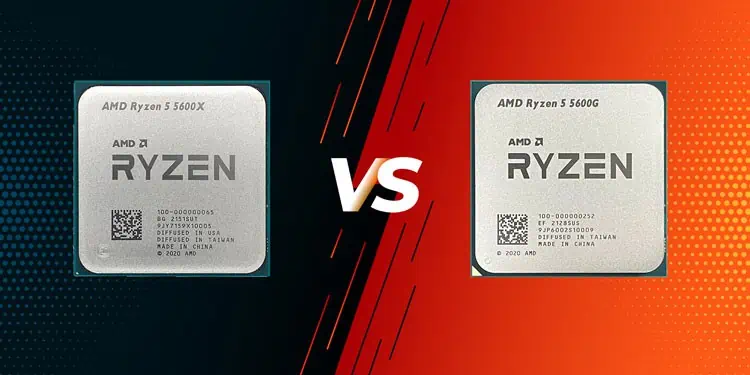AMD produces CPUs as well as APUs as its main computer processors. For the general user, it can be difficult to know exactly the differences and choose the better one for their system.
The main difference is that CPUs are devoid of integrated graphics cores while APUs come with an integrated GPU. While it may indicate that APUs are better than CPUs, there are times when CPU is preferable. You need to account for other variables as well while comparing a CPU with an APU.
What is a CPU?
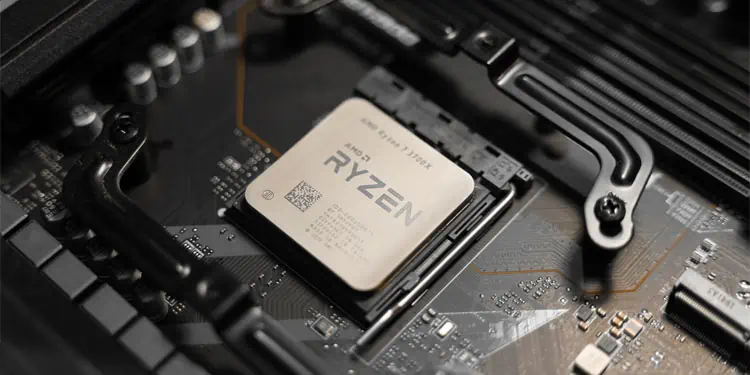
A Central Processing Unit (CPU) is the main brain of a computer. It is a serial processor that handles all the non-graphics processing.
Most graphical tasks require more powerful parallel processors with multiple cores as each individual render requires numerous components to be processed at the same time. This is why you need to use a graphics processing unit (GPU) along with a CPU to properly render graphics.
This is not to say that CPUs can’t process these components. They certainly can, but since they need to compute the individual components serially, there’s a vast difference in their performance compared to a GPU.
What is an APU?
Accelerated Processing Unit (APU) is AMD’s proprietary CPU that comes with an integrated GPU (iGPU). So it is capable of both serial processing and parallel processing. The parallel processing cores are used to render graphics and the serial cores handle the rest of the tasks.
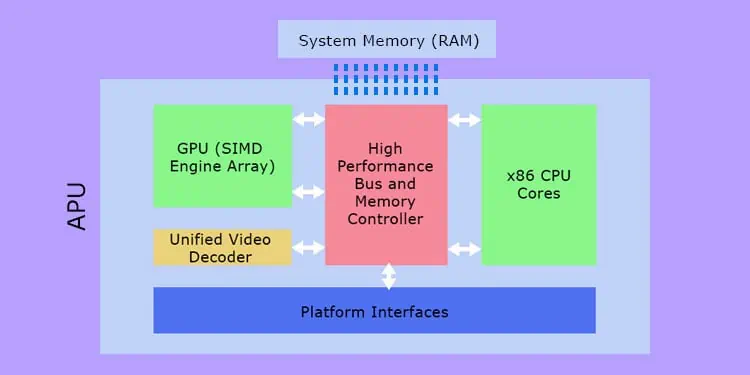
Unlike Intel’s CPU which usually comes with an iGPU, AMD creates APUs as a different line of processors. They call the processors without iGPUs just CPUs, and those with iGPUs as APUs and sell them separately on the market.
Also, previously it was easy to tell which AMD processors were just CPUs (lacked iGPU) and which were APUs. If the name contained a G, for example, AMD Ryzen™ 7 5700G, they were APUs.
At the time of writing this article, all 7000 series processors contained integrated graphics, so they are all APUs even if they don’t have a G in the name.
How Exactly Do APUs Differ from AMD CPUs?
Now that you know what CPU and APU are, let’s get into the nitty-gritty of how exactly they differ from one another.
Cost and Performance
When we consider these two processors, APUs are pricier than CPUs. However, the total cost of CPU + GPU greatly exceeds that of an APU. A good GPU is very pricey and the GPUs you can actually get on the market are even more expensive after the motherboard manufacturer’s customization.
Now, as you might have guessed, the cost directly corresponds to the performance. APUs handle graphics tasks that CPUs can’t. But there are more things you need to consider.
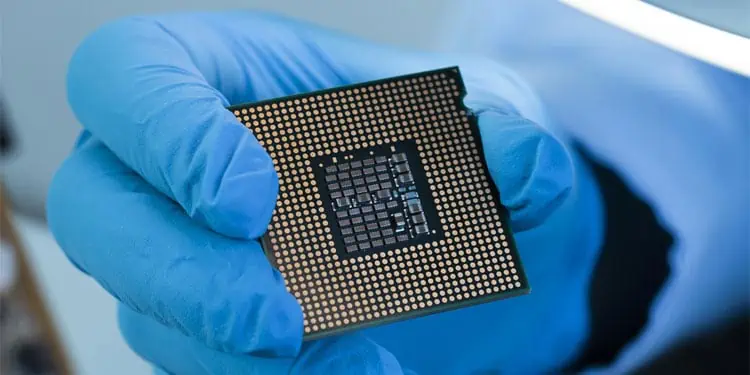
GPUs come with multiple dedicated VRAMs that act as a temporary buffer for the GPU to enhance its performance. But most APUs don’t have such components and they will be using a section of the RAM instead.
So the CPU cores on the APU won’t be able to perform as well as a standalone CPU. And while the latest APUs also provide better performance than most entry-level GPUs, their performance won’t come close to major dedicated GPUs available in the market.
Still, if you don’t need to run any graphics-intensive applications or are on a tight budget, APU is a suitable option for you. Otherwise, you definitely should get a CPU and a good GPU. It is especially true if you want to play most of the AAA games out there.
Upgradability
With AMD’s Dual Graphics technology, APUs can also work together with some dedicated GPUs. Even in devices that don’t have this technology, you can still use both graphics processors. Depending on the application you are using, most systems will automatically switch between the two processors.
So, you can run intensive apps with the dedicated GPU while also maintaining the power consumption and heat output by switching to the integrated processor in other situations.
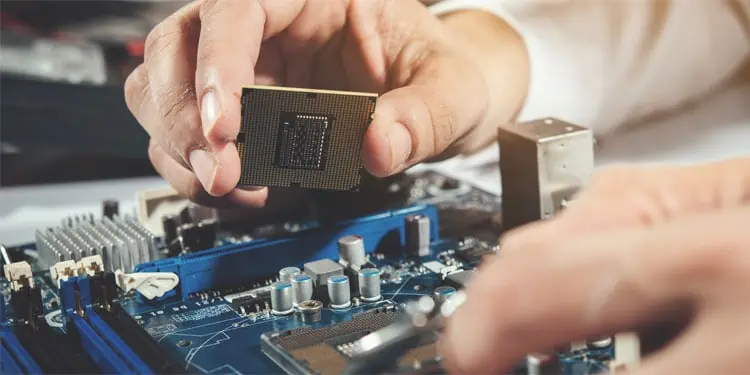
In some devices, installing a GPU actually disables the integrated graphics processor in the APU. But the rest of the points stand true. So, you can get an APU if you don’t have enough budget and then add a powerful GPU later.
While considering the combination of discrete CPU and GPU, you will need to forego your GPU altogether if you want to upgrade it to a more powerful device. So, it might not be as cost-efficient.
Are Intel CPUs (with iGPU) as Good as AMD APUs?
APU is a proprietary technology of AMD that it uses for marketing purposes. So even if Intel has CPUs with integrated graphics, you can’t call them APUs.
If the Intel processor’s name ends in X or F, it does not contain integrated graphics. Otherwise, it is a CPU with an iGPU.
If you want to know whether Intel CPUs with integrated graphics are as good as AMD APUs, the answer is no. The graphics processor in the APU is much better than Intel’s integrated GPU at rendering graphics and provides better performance.
But it should not be that surprising considering AMD has been creating dedicated GPUs (dGPU) for a long time and has more experience in this regard.
Here’s a small benchmark test result between an AMD APU and an Intel CPU (with iGPU) that illustrate the difference in performance. It shows that the games show higher FPS with an AMD APU than the Intel CPU under similar conditions.
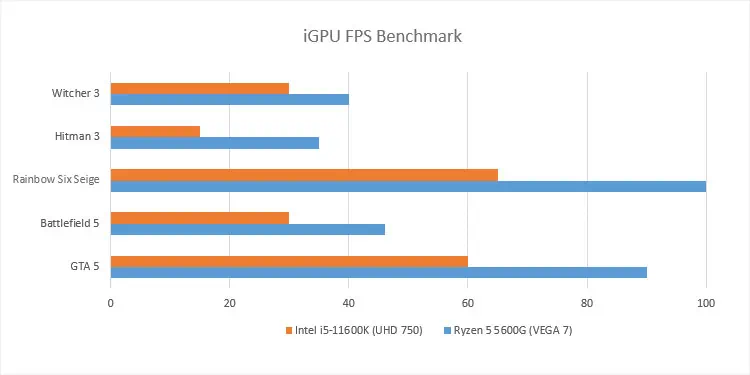
What Should You Buy?
You should already have an idea of whether you should choose AMD CPUs or APUs after reading all the sections above. To summarize,
- If you don’t need a powerful GPU and don’t want to spend much money on it, an APU should be enough for common purposes.
- But if you can afford it or need a powerful graphics processor, it’s better to buy a CPU plus a GPU. You can also buy an APU and a GPU if the GPU supports Dual Graphics Technology.
- APUs, especially the latest ones, also support running various games. But for games that focus on appearance and quality, you can’t do without discrete graphics processors. So, go for a CPU+GPU combination.
